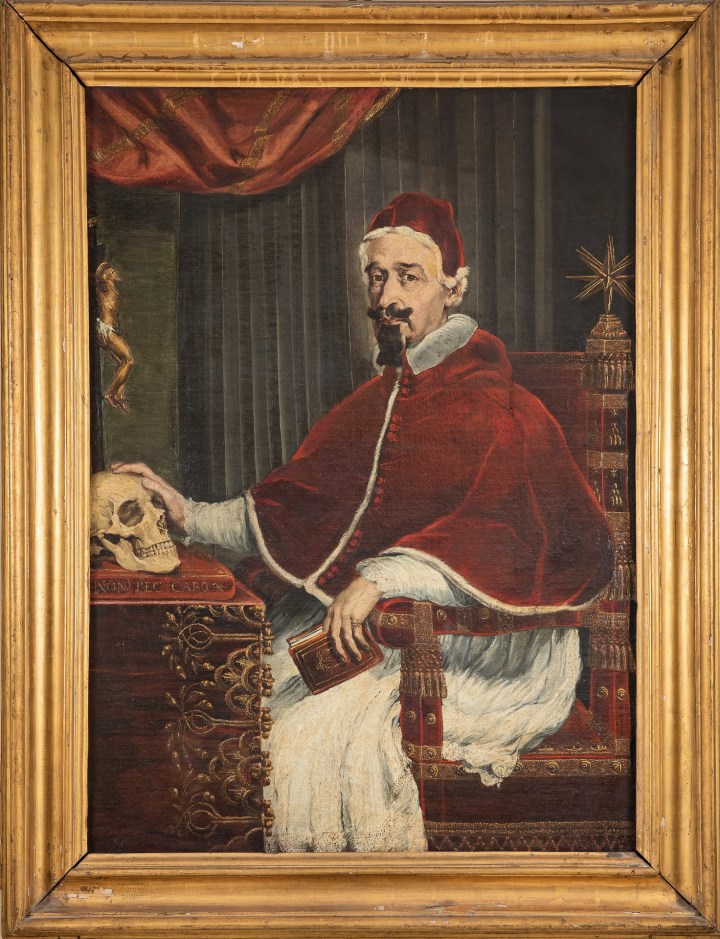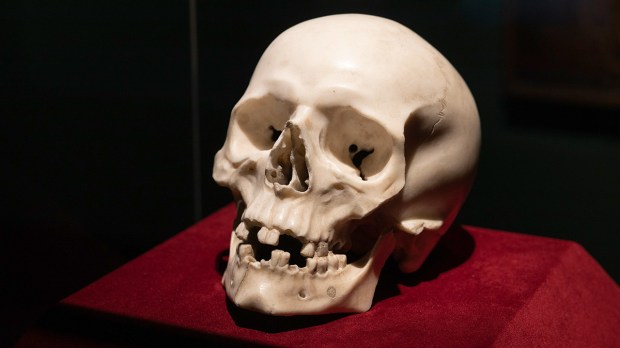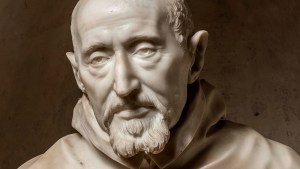Everybody knows the artwork of Gian Lorenzo Bernini, whether they know his name or not.
Every time a papal Mass at the Vatican is broadcast on television, the audience sees the 17th-century artist’s baldachin hovering over the main altar of St. Peter’s Basilica. Even if the event is outside, we see Bernini’s work in the colonnades surrounding St. Peter’s Square.

So it was a surprise to art experts when a Bernini work was found after being “hidden” in plain sight.
The piece of art is small enough to be held in one’s hands — a life-size human skull, sculpted of Carrara marble.
Turns out the work was commissioned by a pope, so he could have something in front of him reminding him of his destiny.
The piece was on display at Schloss Pillnitz, a palace south of Dresden, Germany, reported the Art Newspaper, and discovered by Claudia Kryza-Gersch, a curator who was scouting for art for a Caravaggio exhibition. Kryza-Gersch felt the skull would be a good part of the exhibit, so she had it brought to the restoration workshop of the Dresden State Art Collections.
“There was something about seeing the object out of its glass case,” Kryza-Gersch told the Art Newspaper. “I was so overwhelmed. It’s scary — it has an aura.”
She had no idea who the sculptor was, but it caused a stir in the restoration workshop.
“Everybody had the same reaction to it,” Kryza-Gersch told the newspaper. “We were standing around a table, looking at it. The question of course was — who made it? And since it has Roman provenance, someone jokingly said ‘maybe it’s a Bernini?’”
As the website explained:
The skull was part of the collection of the Chigi family in Rome, which Augustus the Strong (the ruler of Saxony from 1694 as well as the King of Poland and Grand Duke of Lithuania for a time) acquired in 1728. The trove comprised 164 sculptures of antiquity, and four contemporary Baroque works. For decades, the death head was part of the archaeological collection, whose curators were less interested in the more modern works, Kryza-Gersch says. “It was just not on the radar.”
Kryza-Gersch began to research the Dresden inventories and archives. In the correspondence of Raymond Le Plat, Augustus the Strong’s chief art buyer, she found a mention of the “famous death head” and the name of the artist — Gian Lorenzo Bernini.
“Wow,” she says. “Our jokes were proven right.”
She combed the Chigi archives and Bernini literature to fill in the gaps.
What she found there was even more intriguing. Pope Alexander VII, who was born Fabio Chigi, just a few days after his election in 1655, commissioned Bernini to produce two things: a sarcophagus and the skull.
He kept both in plain view, to remind him of the inevitability of death. This is part of a long spiritual tradition in the Church known as memento mori, or “remember your death.”
As if he had to be reminded. Just a year after he ascended to the papal throne, the Art Newspaper points out, there was an outbreak of the plague in 1656. The plague was even more contagious than the coronavirus that has wreaked havoc around the world in our own time. But under Pope Alexander, Rome seems to have escaped the worst of it. According to the Yale Law Library website, the pope made Cardinal Girolamo Gastaldi commissioner of public health and was in charge of Rome’s response to the epidemic. “His efforts were considered a resounding success because only 4,500 died in Rome (about 8% of the population), compared to the 150,000 who died in Naples and 50,000 in Genoa, representing over half of their respective populations.”
Bernini’s marble skull is on display until September 5 at the Semperbau in Dresden, in an exhibit called Bernini, the Pope and Death. Along with it is a portrait by Bernini’s pupil Guido Ubaldo Abbatini, depicting Alexander laying his hand on the skull. This painting is on loan from the Sovereign Military Order of Malta in Rome.



